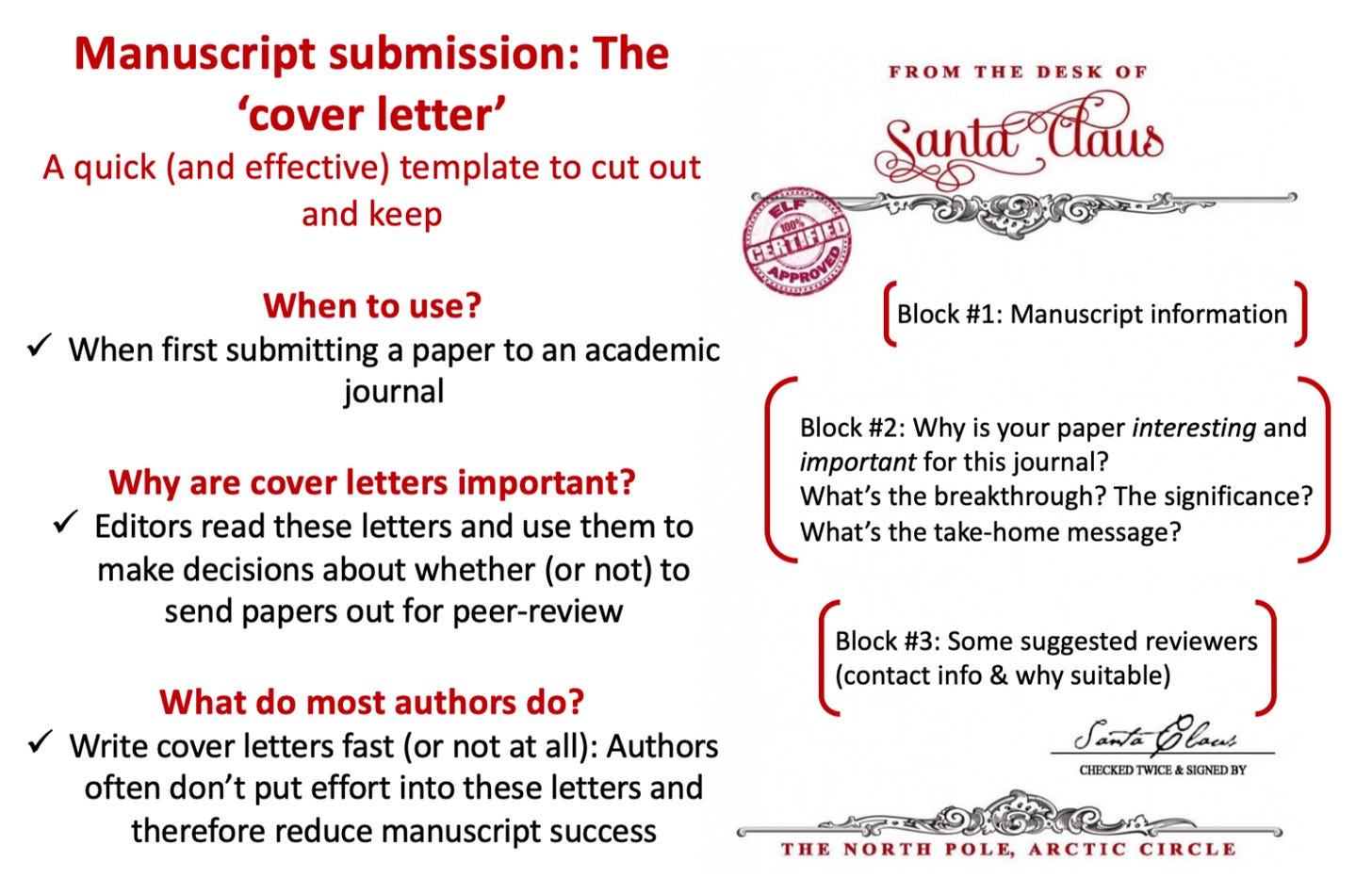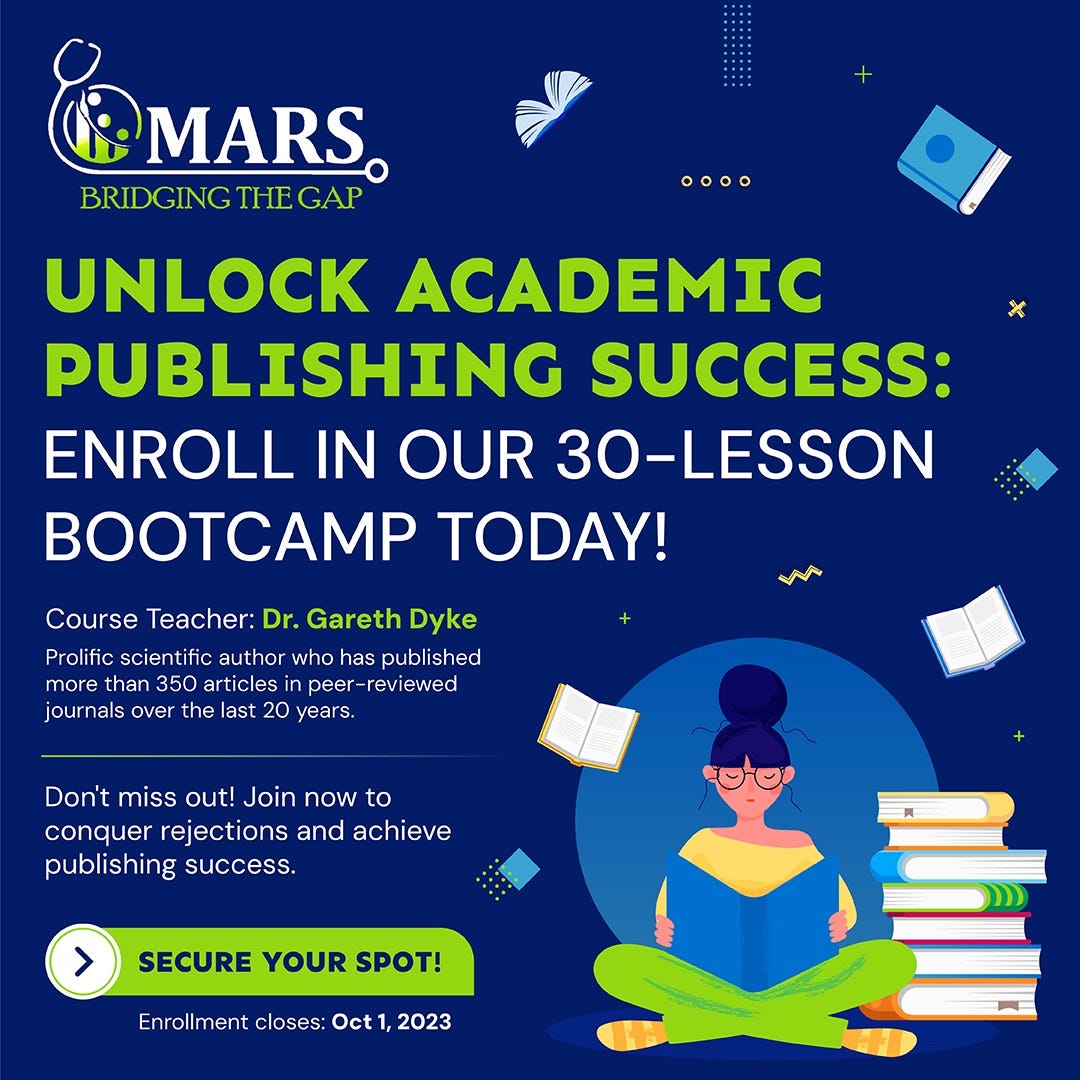How to write a GREAT Cover Letter for your next paper
Writing a paper is half the battle: Convincing an Editor that your work is going to be an AMAZING ADDITION to their journal is also important - Make sure your work gets sent out for peer review!
Even great manuscripts struggle to stand out based on the title or its contents alone. They need great cover letters.
Cover letters for journal submission are an underrated part of the submission process. Don’t overlook them. They’re a valuable step to getting your research noticed, published, and all the good things that come after that.
The truth is, most journal editors just don’t have the time to thoroughly read every submitted article in full to decide if it’s suitable for their journal. They use cover letters to help them filter out the most interesting and appropriate submissions first.
Why writing a great cover letter is so important
One of the most important, but often neglected, aspects of academic manuscript submission is writing a great, effective cover letter. Academic authors very often forget to put time into this stage of the process. A cover letter is a communication, created either in an email or as a separate word file, that you address to a journal editor and upload along with your article when making a submission. This letter is hugely important because it is often all an editor will read, alongside your abstract, before making a so-called ‘desk rejection’ decision about your paper.
If your manuscript doesn’t have a cover letter and the 12 other articles on the editor’s desk do, it’s likely that your paper will be looked at last. Putting in that extra effort, just like on a job application, lets you sell your research, avoid quick rejections, and more likely make it to peer review.
You’ll be aware that high profile academic journals, those with good impact factors, often have rejection rates of 90 percent, or higher. This means that nine out of ten papers submitted to high profile international journals will be assessed just by an editor before being either rejected outright or sent out for peer-review. You want to all you can to ensure that your articles are in that 10 percent of manuscript deemed ‘interesting enough’ by an editor to be sent out for peer-review. How can you do this? Above all, you need a good, catchy and interesting title, a well-written, structured, and effective abstract, and a great cover letter. Don’t make the mistake that around seven out of ten authors make and write something boring and generic in your cover letter: ‘Please find our paper enclosed which we hope you will find interesting. Thank you for your time in advance’. You’ve just wasted a huge opportunity.
As an editor I always open an author’s cover letter first before even reading any of the rest of a paper. I do this because I don’t want to waste time: I want to know, quickly, why the article is interesting, why it’s suitable for the readership of the journal I manage, and why we should send it out for peer-review. You need to make sure that you address several key issues in your covering letter when putting it together in order to maximise your chances of success. As noted this is one of the first sections of your paper an editor will read, so make it count. Have a think about the heading below to develop a great cover letter. I recommend writing one or two sentences in response to each of the points below and you’ll then have a working basis for the text of your next cover letter. Later in this article, I’ll provide you with templates for writing cover letters that you can modify based on your own research.
SHOUT OUT: Interested in all the knowledge? I’ve distilled 25 years of academic publishing, presenting and writing experience into The Bootcamp: A 30-lesson course which you can access and watch again and again. I published 270 peer reviewed papers in my career (including multiple times in Nature and Science) and there is no reason why you cannot do more! Click here to learn more.
Unlock the Secrets to Academic Publishing Success:
Transform Your Research into Peer-Reviewed Publications with Our Proven 30-Lesson Bootcamp » Click here
Say Goodbye to Endless Revisions and Journal Rejections! Your Fast-Track to Publishing Success Starts Here!
I get it. The struggle is real. You've poured your heart and soul into your research, only to be met with confusing reviewer feedback, language barriers, and the overwhelming intricacies of choosing the right journal.
⬇️ And now, Back to the Story! ⬇️
Keep reading with a 7-day free trial
Subscribe to Writing and Publishing Research Papers: Tips n'Tricks to keep reading this post and get 7 days of free access to the full post archives.







